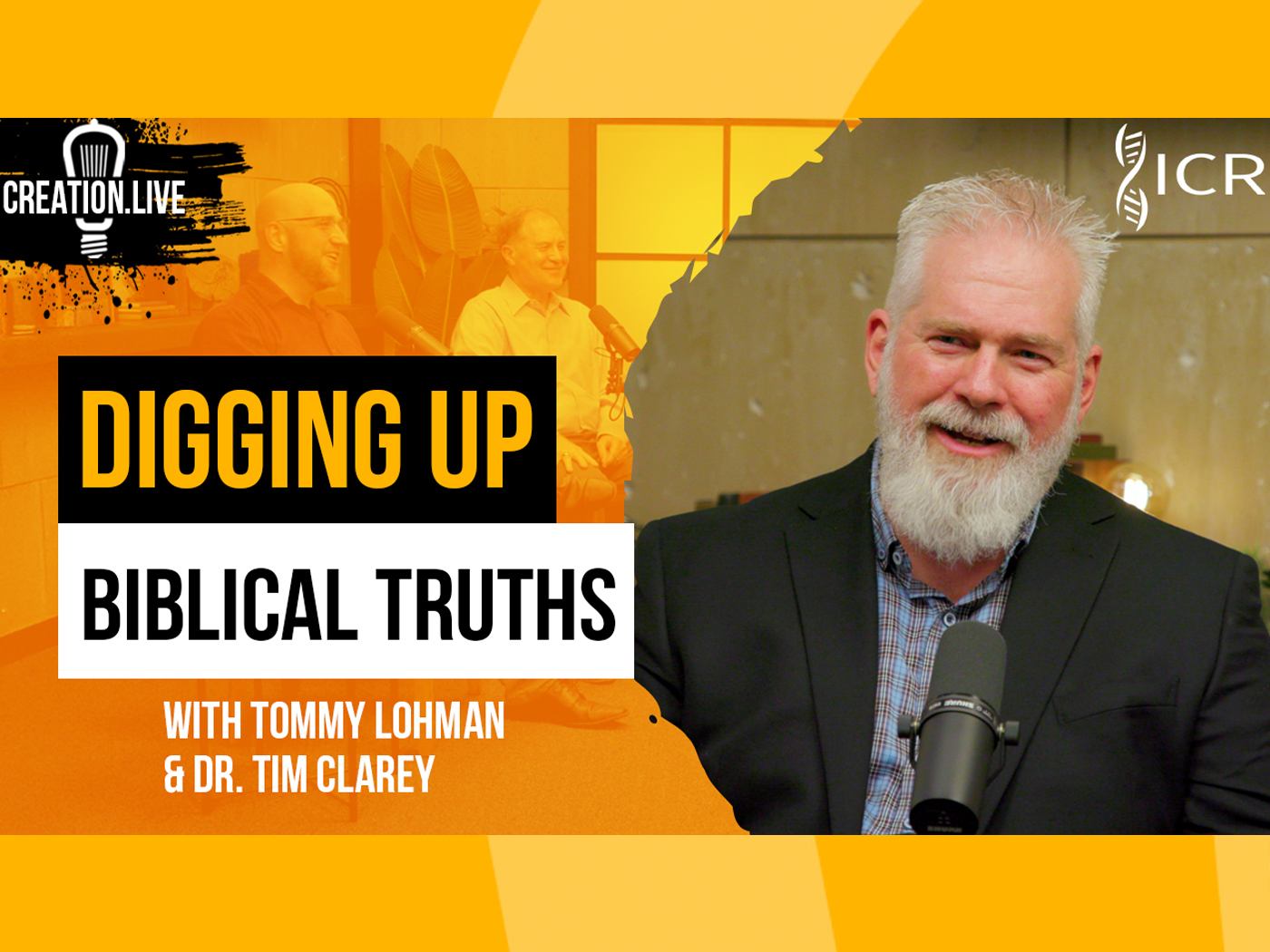Wernher von Braun—more than any other scientist—brought us into the space age.1 Von Braun laid the foundation for cell phones, satellite radio, the Internet, GPS, and Doppler radar. His later career reads like a history of the American space program,2 and it was undergirded by a firm belief in the Creator God of the Bible.
In 1934, 22-year-old Wernher von Braun received his Ph.D. in physics from what is now the Humboldt University of Berlin.3 Adolf Hitler had come to power the year before, and by then von Braun’s accomplishments were already widely recognized.4 When he was not yet 30, von Braun had eighty scientists and technicians working for him at Peenemünde, Germany. Under his leadership, the first true rocket was successfully launched in 1942.5 This rocket was also the world’s first operational guided ballistic missile—a technical coup requiring significant progress in understanding aerodynamics, rocket propulsion, and guidance systems.
Although von Braun initially supported the German war effort, he soon became disenchanted with Hitler’s policies and began to voice his opposition against the war and Hitler himself.
Eventually, Heinrich Himmler attempted to take over the rocket program, widening the gap between von Braun and the Nazis. In September 1944, von Braun objected to the thousands of V-2 rockets being launched in attacks on the civilian populations of London and Paris. As a result, he and his top aides were jailed. Realizing the rocket program could not continue without von Braun, authorities released them in the spring of 1945. Soon afterward, von Braun and his entire team and their families—some 5,000 people—surrendered to the Americans. He became one of the more than 4,500 German army technicians brought to the United States.
The American Space Program Begins
The American space program was largely a transplant of the German team.6 In America, von Braun became a Christian and a creationist.7 He also became the leader of the scientists who placed America’s first satellite—Explorer 1—into orbit on January 31, 1958.8 Von Braun “might have preceded Sputnik if he had been given the go-ahead” by the government.4
Critical to von Braun’s success was his enormous dedication to his work. Jay Holmes concluded that von Braun “must certainly rank among the most single-minded men in recorded history.”9 For over thirty-five years he pursued the idea of building rockets for space exploration.10
It was only in America that he was able to fulfill his dream of using rockets for the good of humanity by sending satellites into orbit. The enormous importance of satellites for our modern way of life is demonstrated by their use in communications, scientific research, and the military.
In 1960, von Braun supervised the development of the Saturn liquid-fuel rocket that provided the basis for transporting Neil Armstrong and his crew to the moon. Project Apollo was the peak of the American space program—and von Braun was at the center of the entire enterprise.
The Scientist as Creationist
After his conversion, Dr. von Braun became a strong proponent of the Christian faith and creationism. He wrote “a good deal about his Christian faith” and even spoke extensively on the subject.11 He said creationism was “a viable scientific theory for the origin of the universe, life and man.”12 Von Braun concluded that acknowledging the universe is designed
ultimately raises the question of a Designer….The scientific method does not allow us to exclude data which lead to the conclusion that the universe, life and man are based on design. To be forced to believe…that everything in the universe happened by chance—would violate the very objectivity of science itself. Certainly there are those who argue that the universe evolved out of a random process, but what random process could produce the brain of a man or the system of the human eye?13
His beliefs regarding the importance of studying God’s creation are vividly expressed in his observation that the “more we learn about God’s creation, the more I am impressed with the orderliness and unerring perfection of the natural laws that govern it. In this perfection, man—the scientist—catches a glimpse of the Creator and his design for nature.”14
Dr. von Braun’s own words reveal how important the design argument was to him:
The primary resistance to acknowledging the “Case for Design” as a viable scientific alternative to the current “Case for Chance” lies in the inconceivability, in some scientists’ minds, of a Designer. The inconceivability of some ultimate issue…should not be allowed to rule out any theory that explains the interrelationship of observed data….[He added that] many intelligent men say they cannot visualize a Designer. Well, can a physicist visualize an electron? The electron is materially inconceivable and yet, it is so perfectly known through its effects that we use it to illuminate our cities [and] guide our airliners....What strange rationale makes some physicists accept the inconceivable electron as real while refusing to accept the reality of a Designer on the ground that they cannot conceive Him?…Although they really do not understand the electron either, they are ready to accept it because they managed to produce a rather clumsy mechanical model of it.15
Von Braun also believed that origins should be taught objectively in government schools, arguing that the claim that science and religion should be separate is invalid. Instead, science “in its drive to understand the creation, and religion in its drive to understand the Creator, have many common objectives.”
Science and religion are like two windows in a house through which we look at the reality of the Creator and the laws manifested in His creation. As long as we see two different images through these two windows…we must keep trying to obtain a more complete and better integrated total picture of the ultimate reality by properly tying together our scientific and religious concepts.16
Von Braun stressed that more than ever our survival depends on the adherence to basic ethical principles provided by Christianity.17 When asked about his views on religion and science, specifically if “technological methods and religious beliefs are really compatible,” von Braun answered:
While technology controls the forces of nature around us, ethics try to control the forces of nature within us....The Ten Commandments are entirely adequate—without amendments—to cope with all the problems the technological revolution not only has brought up, but will bring up in the future.18
Von Braun concluded that the Bible was the “most effective bulwark ever built against the erosive effects of time....The Bible is...the revelation of God’s nature and love.”19 Prayer, too, was critically important to von Braun. Asked when his need to pray was particularly strong, he stated that he prayed a lot before and during the crucial Apollo flights.20 As Henry Morris notes, von Braun believed that manned space flight was an amazing achievement that
has opened for mankind thus far only a tiny door for viewing the awesome reaches of space. An outlook through this peephole at the vast mysteries of the universe should only confirm our belief in the certainty of its Creator. I find it as difficult to understand a scientist who does not acknowledge the presence of a superior rationality behind the existence of the universe as it is to comprehend a theologian who would deny the advances of science.21
Von Braun died in Alexandria, Virginia, on June 16, 1977, leaving the world a radically different place.
Summary
A study of the history of Western science reveals that Christianity was a major motivation for many of the world’s greatest scientists. They concluded that God reveals Himself both in the Scriptures and in His creation, and to get closer to God it is incumbent on the believer to study His creation. Wernher von Braun stated that the “universe revealed through scientific inquiry is the living witness that God has indeed been at work. Understanding the nature of the creation provides a substantive basis for the faith by which we attempt to know the nature of the Creator.”22 Properly understood, science and the Bible reveal the same truth.
References
- Bergaust, E. 1976. Wernher von Braun. Washington, DC: National Space Institute.
- Von Braun, W. 1971. Space Frontier. New York: Holt, Rinehart and Winston, 3.
- Ward, B. 2005. Dr. Space: The Life of Wernher von Braun. Annapolis, MD: U.S. Naval Institute Press, 19.
- Asimov, I. 1972. Asimov’s Biographical Encyclopedia of Science and Technology: The Lives and Achievements of 1195 Great Scientists from Ancient Times to the Present, Chronologically Arranged. New York: Avon Books, 736.
- Lamont, A. 1994. Wernher von Braun, Pioneer of Space Exploration. Creation Ex Nihilo. 16 (2): 26-30.
- Holmes, J. 1962. America on the Moon: The Enterprise of the Sixties. Philadelphia, PA: J. B. Lippincott Co.
- Nelson, C. 2009. Rocket Men. New York: Viking, 110.
- Greene, J. E., ed. 1966. Modern Men of Science. New York: McGraw-Hill Book Company.
- Holmes, America on the Moon, 107.
- Gourlay, W. E. 1962. Picture Book of Today’s Scientists. New York: Sterling.
- Bergaust, Wernher von Braun, 109.
- Seagraves, K. 1973. Jesus Christ Creator. San Diego, CA: Creation-Science Research Center, 7.
- Ibid, 7-8.
- Bergaust, Wernher von Braun, 113.
- Seagraves, Jesus Christ Creator, 8-9.
- Bergaust, Wernher von Braun, 114.
- Ibid, 110.
- Ibid, 111.
- Ibid, 115-116.
- Ibid, 117.
- Morris, H. M. 1988. Men of Science, Men of God: Great Scientists of the Past Who Believed the Bible. Green Forest, AR: Master Books, 85.
- Ward, Dr. Space, 217-218.
* Dr. Bergman is Adjunct Associate Professor at the University of Toledo Medical College in Ohio.



















